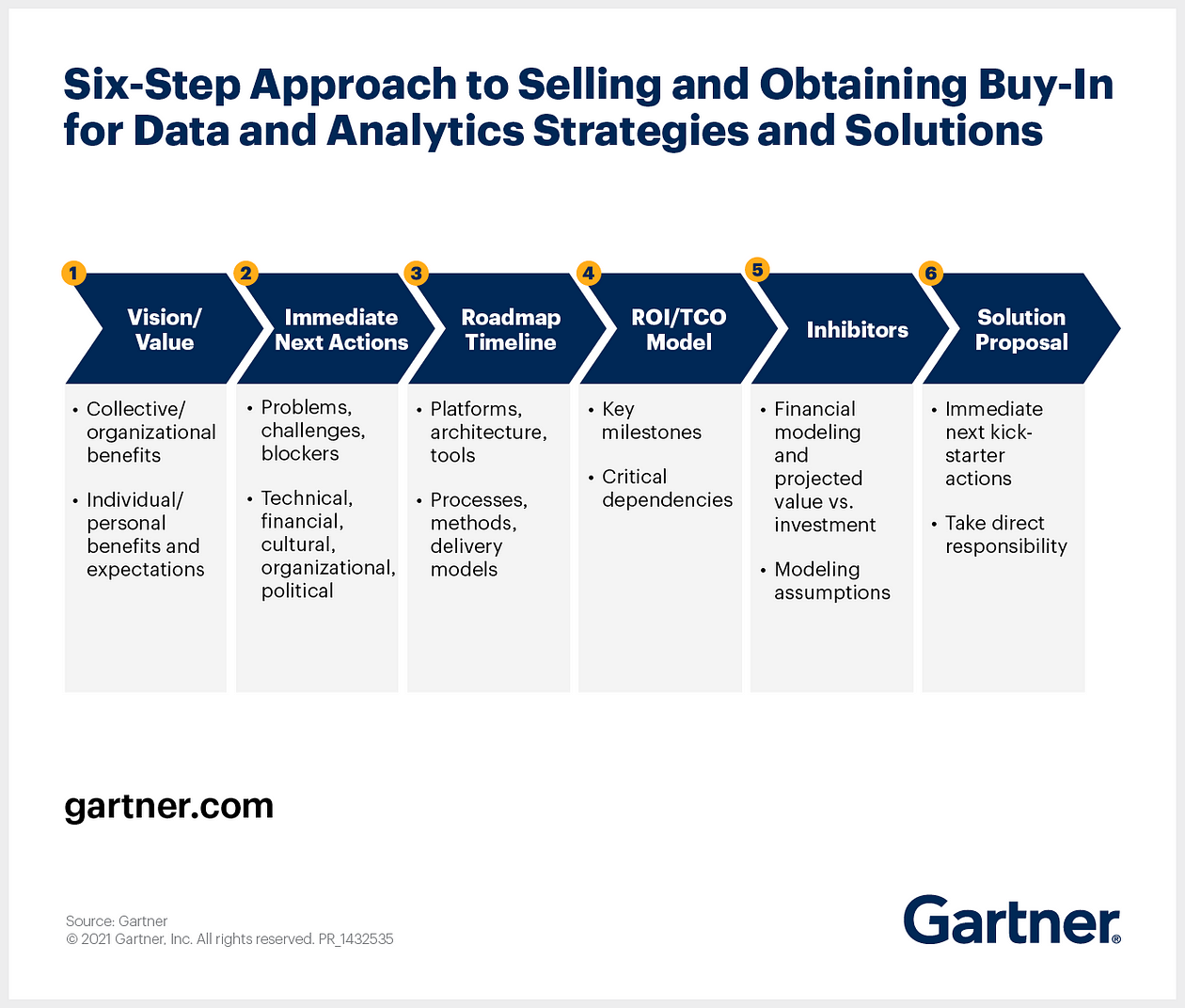Convincing stakeholders of the value of data and analytics requires communicating business outcomes and personal impact. Here are some tactics that can help.
Gartner
Contributor: Laurence Goasduff
September 2, 2021
Chief data officers (CDOs) know effective business decisions require data but find it difficult to effectively link data to specific business benefits and results.
However, Gartner’s 2021 CDO Survey found that
- 27% of respondents are measured by revenue generation or contribution and
- only 17% meet those objectives.
… (only)… 27% of CDO respondents are measured by revenue generation or contribution and
only 17% meet those objectives ..
“Most data and analytics leaders struggle to define, articulate and communicate the business value of data and analytics — and business executives are often skeptical,” says Alan D. Duncan, Distinguished VP Analyst, Gartner.
To influence stakeholders, you must sell your vision and strategy to the business community.
This requires identifying and communicating the desired business outcomes (why) and the personal impacts on the stakeholders you’re targeting (for whom).
Use this six-step approach.

Step 1. Set a strong vision that resonates with stakeholders
Present a resilient vision that connects both rationally and emotionally to the stakeholder’s aspirations. Emphasize impact metrics (measurable business outcomes and value) instead of delivery progress metrics (completion of tasks and production of technical output). Stop focusing only on the numbers and spend half of your time developing the value story or thinking. Follow the SMART approach where business benefits should be specific, measurable, achievable, relevant and time-bound.
Step 2. Call out inhibitors
Explicitly identify inhibitors, challenges, problems or risks (e.g., incumbent technical staff want to protect their positions, limited availability of skilled staff may inhibit the ability to execute, or there are power struggles over who owns the budget for data and analytics initiatives). Present the resulting impact of these challenges, and propose remedial actions. For example, if there are low levels of data literacy within the business, develop a data literacy program to increase engagement and create analytics prototypes with real business data to stimulate business thinking and socialize new ideas.
Step 3. Trace underlying data back to business outcomes
When developing D&A solution designs (e.g., data management infrastructure platforms or data lake and warehouse models), you must map business value outcomes to the underlying data needed to support them. Connect the data the business needs to access to answer key business questions. For example, the customer contact data maintained in the customer relationship management (CRM) data is combined with financial transaction data stored in the finance system. These is done to provide a profile of customer activity, which guides marketing to tailor a new marketing campaign that focuses on the most profitable customer segment.
Step 4. Present the roadmap in business terms
Create a D&A analytics roadmap that illustrates the milestones for major business-facing data and analytics solution deliverables. Show deliverables that need to occur over time to achieve the future state. Communicate on the basis of answering: What will I get? When will I get it? What impact will it have on me?
Step 5. Illustrate a cost-benefit analysis summary within the overall business initiative
When making the business case for D&A, the initial investment and ongoing support costs (total cost of ownership [TCO]) must be justifiable in terms of the expected ROI. The business case should be forward-thinking and future-oriented, and show a net positive financial return across the initiative.
“Focus on leading indicators and financial expectations — within any organization, a positive financial outcome supports further innovation and achievement of the strategic objectives,” says Duncan.
Step 6. Kick-start the data and analytics initiative
Assign direct responsibility, deadlines, and the reason for next steps. For example, establish an initial collaboration workshop and task the project leader to bring business and technical project participants together to begin exploring the available data.

Originally published at https://www.gartner.com on September 2, 2021.
Names mentioned:
Alan D. Duncan, Distinguished VP Analyst, Gartner.












